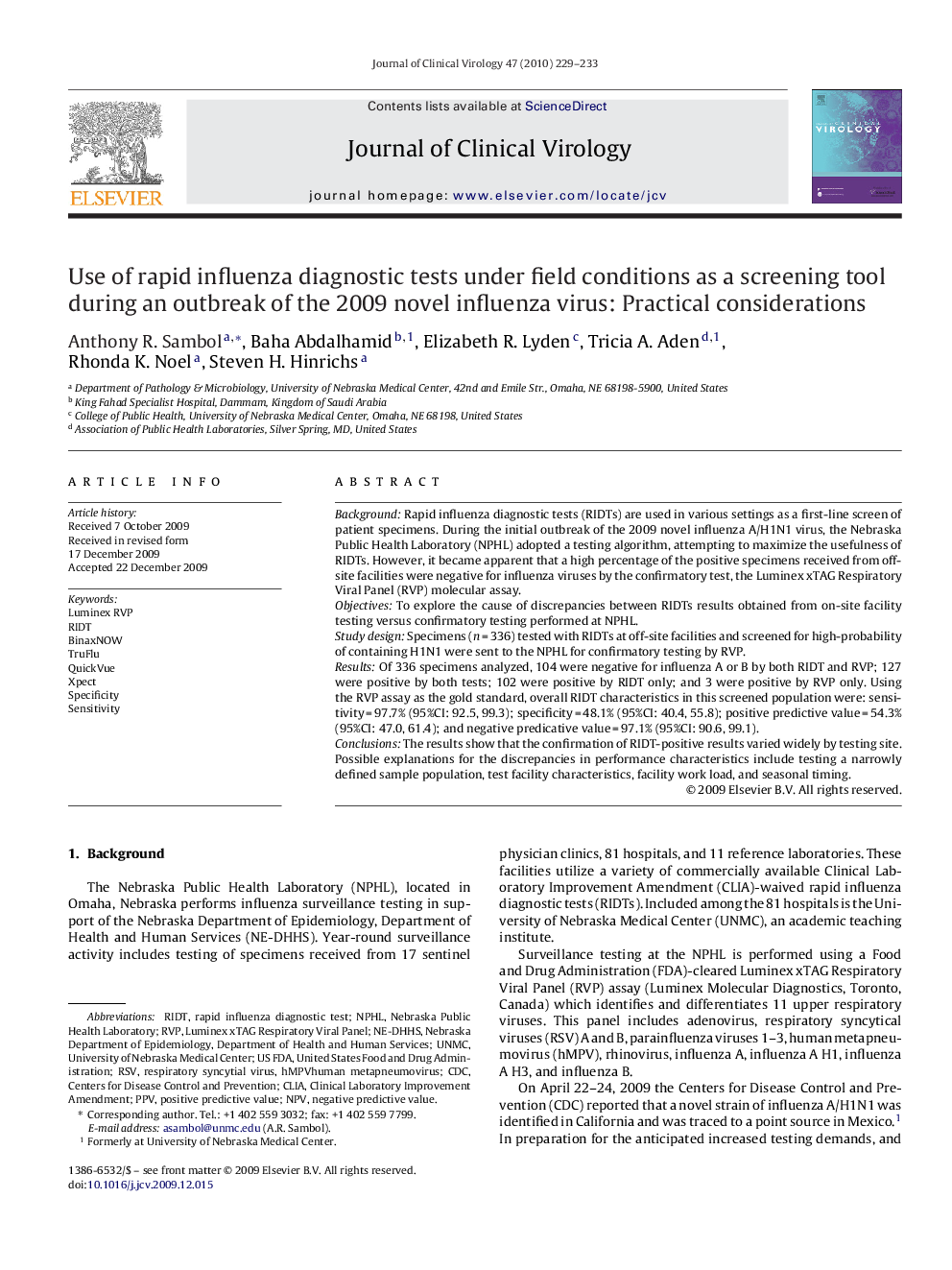| کد مقاله | کد نشریه | سال انتشار | مقاله انگلیسی | نسخه تمام متن |
|---|---|---|---|---|
| 3369412 | 1219034 | 2010 | 5 صفحه PDF | دانلود رایگان |

BackgroundRapid influenza diagnostic tests (RIDTs) are used in various settings as a first-line screen of patient specimens. During the initial outbreak of the 2009 novel influenza A/H1N1 virus, the Nebraska Public Health Laboratory (NPHL) adopted a testing algorithm, attempting to maximize the usefulness of RIDTs. However, it became apparent that a high percentage of the positive specimens received from off-site facilities were negative for influenza viruses by the confirmatory test, the Luminex xTAG Respiratory Viral Panel (RVP) molecular assay.ObjectivesTo explore the cause of discrepancies between RIDTs results obtained from on-site facility testing versus confirmatory testing performed at NPHL.Study designSpecimens (n = 336) tested with RIDTs at off-site facilities and screened for high-probability of containing H1N1 were sent to the NPHL for confirmatory testing by RVP.ResultsOf 336 specimens analyzed, 104 were negative for influenza A or B by both RIDT and RVP; 127 were positive by both tests; 102 were positive by RIDT only; and 3 were positive by RVP only. Using the RVP assay as the gold standard, overall RIDT characteristics in this screened population were: sensitivity = 97.7% (95%CI: 92.5, 99.3); specificity = 48.1% (95%CI: 40.4, 55.8); positive predictive value = 54.3% (95%CI: 47.0, 61.4); and negative predicative value = 97.1% (95%CI: 90.6, 99.1).ConclusionsThe results show that the confirmation of RIDT-positive results varied widely by testing site. Possible explanations for the discrepancies in performance characteristics include testing a narrowly defined sample population, test facility characteristics, facility work load, and seasonal timing.
Journal: Journal of Clinical Virology - Volume 47, Issue 3, March 2010, Pages 229–233